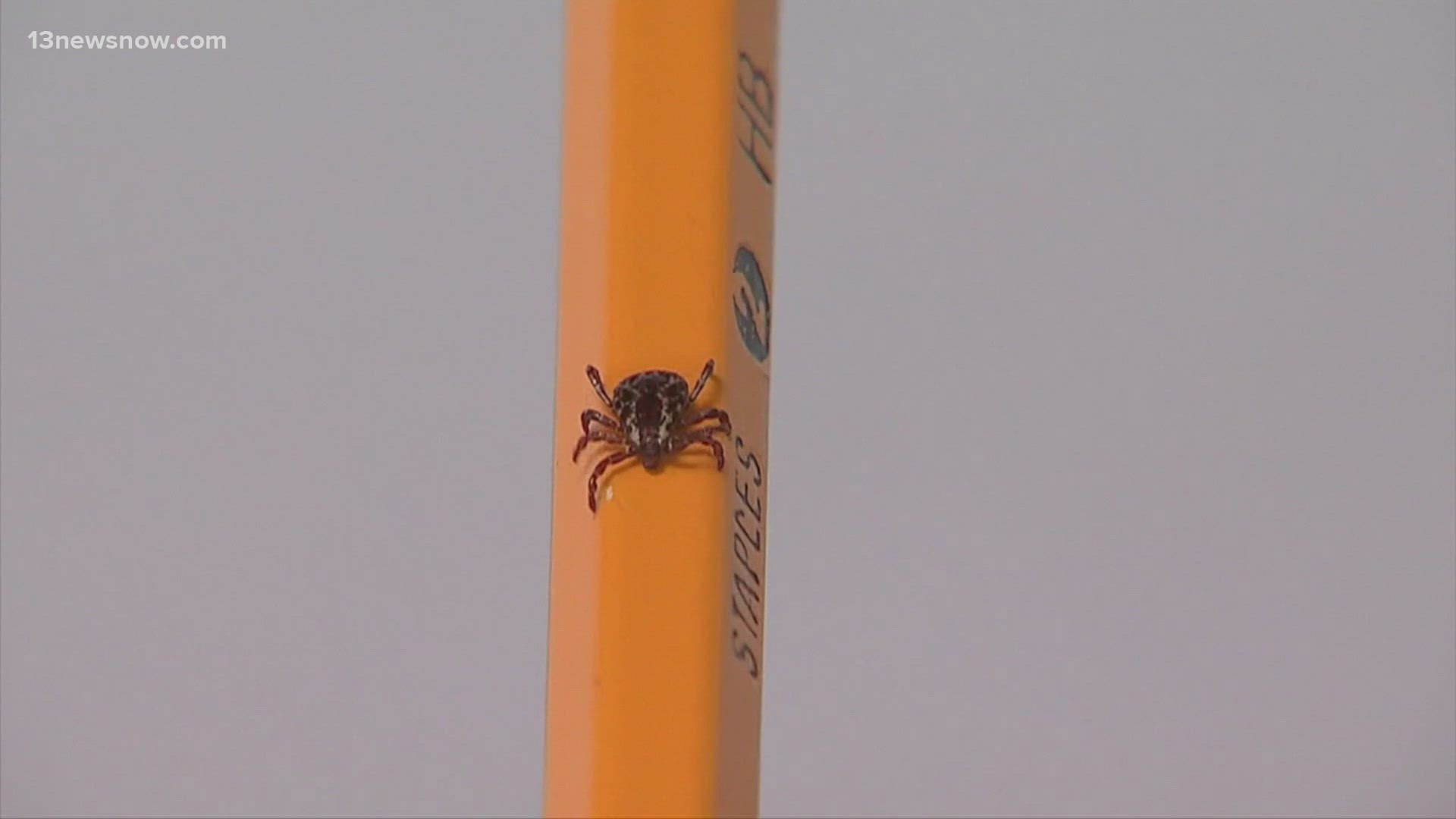NORFOLK, Va. — Many people have experienced the annoyance and disgust that come with removing a tick, but perhaps not everyone is aware of the dangers of tick bites and how you can prevent them. Here's what you should know ahead of tick season in Virginia.
According to the Centers for Disease Control (CDC), Virginia is grouped in the Northeast region with the highest reported number of Emergency Department tick bite incidents every year since 2017.
That number may be correlated to the CDC statistic that Virginia is also among the 16 states with the highest number of incidents of Lyme disease.
When is tick season?
Tick season generally begins in March, peaks in May and starts going down significantly in August, so all of the summer season has a higher risk of getting tick bites.
What diseases do ticks carry?
There are several diseases that ticks can carry and pass on to you.
One of the most severe illnesses that ticks carry is Lyme Disease which can cause serious damage to joints, arthritis and other symptoms, according to the Mayo Clinic. However, different species of ticks generally carry different diseases.
Virginia is home to several different species of ticks:
- The American dog tick can carry Tularemia
- The blacklegged tick can carry Lyme disease
- The brown dog tick can carry Rocky Mountain spotted fever
- The Gulf Coast tick can carry a form of spotted fever
- The Lone Star Tick can carry the Bourbon virus
What to do for a tick bite?
The CDC recommends removing ticks as soon as possible in order to avoid infection. They say that your risk for Lyme disease is very low if a tick has been attached for fewer than 24 hours.
How to remove a tick?
According to the CDC:
- Use clean, fine-tipped tweezers to grasp the tick as close to the skin’s surface as possible.
- Pull upward with steady, even pressure. Don’t twist or jerk the tick; this can cause the mouth parts to break off and remain in the skin. If this happens, remove the mouth parts with tweezers. If you cannot remove the mouth easily with tweezers, leave it alone and let the skin heal.
- After removing the tick, thoroughly clean the bite area and your hands with rubbing alcohol or soap and water.
- Never crush a tick with your fingers. Dispose of a live tick by
- Putting it in alcohol,
- Placing it in a sealed bag/container,
- Wrapping it tightly in tape, or
- Flushing it down the toilet.
Symptoms after a tick bite?
If you develop a rash or fever within weeks of a tick removal, you should visit your doctor and inform them of the bite, when it happened, and where the tick likely came from.
For more information on tick removal, data, and diseases associated with ticks, you can go to the CDC's website.

